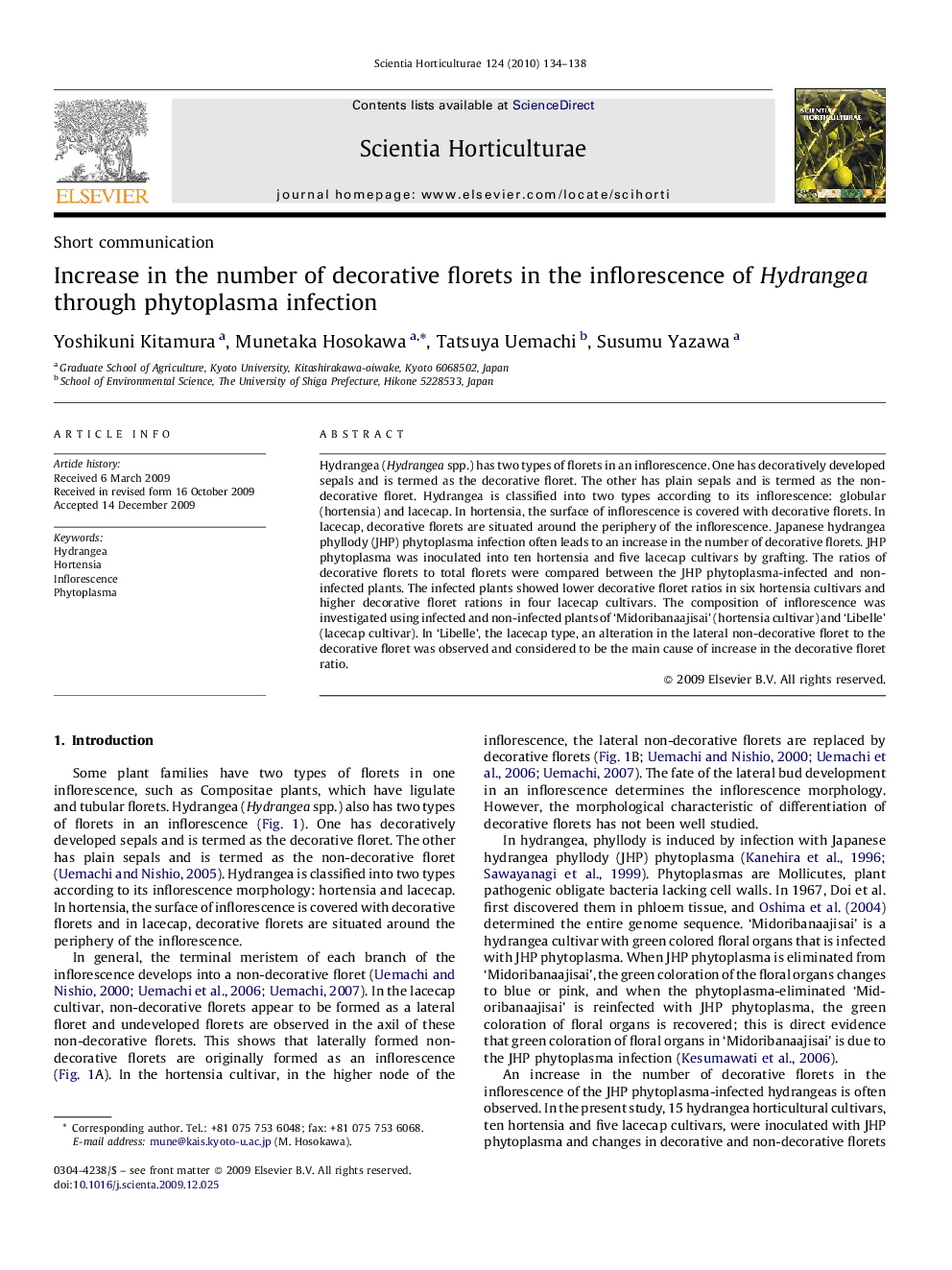| Article ID | Journal | Published Year | Pages | File Type |
|---|---|---|---|---|
| 4568650 | Scientia Horticulturae | 2010 | 5 Pages |
Hydrangea (Hydrangea spp.) has two types of florets in an inflorescence. One has decoratively developed sepals and is termed as the decorative floret. The other has plain sepals and is termed as the non-decorative floret. Hydrangea is classified into two types according to its inflorescence: globular (hortensia) and lacecap. In hortensia, the surface of inflorescence is covered with decorative florets. In lacecap, decorative florets are situated around the periphery of the inflorescence. Japanese hydrangea phyllody (JHP) phytoplasma infection often leads to an increase in the number of decorative florets. JHP phytoplasma was inoculated into ten hortensia and five lacecap cultivars by grafting. The ratios of decorative florets to total florets were compared between the JHP phytoplasma-infected and non-infected plants. The infected plants showed lower decorative floret ratios in six hortensia cultivars and higher decorative floret rations in four lacecap cultivars. The composition of inflorescence was investigated using infected and non-infected plants of ‘Midoribanaajisai’ (hortensia cultivar) and ‘Libelle’ (lacecap cultivar). In ‘Libelle’, the lacecap type, an alteration in the lateral non-decorative floret to the decorative floret was observed and considered to be the main cause of increase in the decorative floret ratio.
